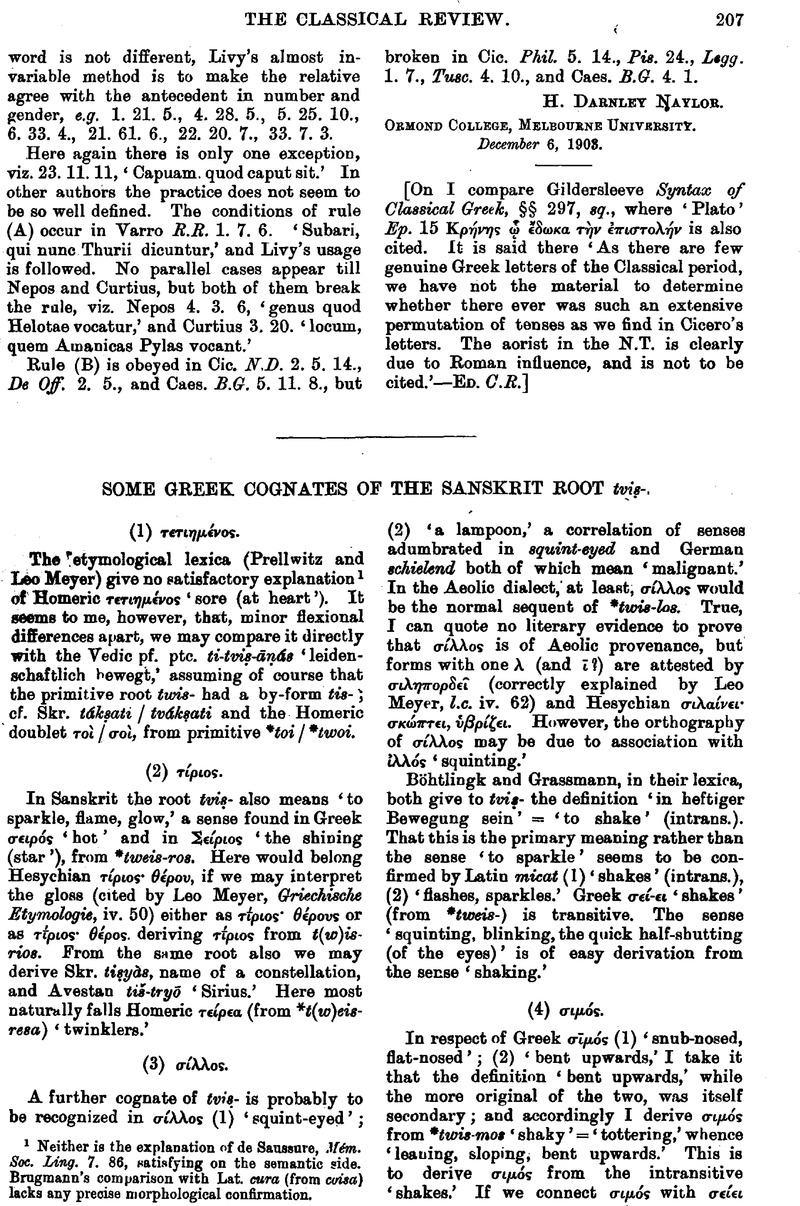No CrossRef data available.
Published online by Cambridge University Press: 27 October 2009

page 207 note 1 Neither is the explanation of de Saussure, Mém. Soc. Ling. 7. 86, satisfying on the semantic ride. Brugmann's comparison with Lat. cura (from coisa) lacks any precise morphological confirmation.
page 208 note 1 As further material for the examination of the question whether -ῐν- is ever a normal sequent of -isn-, the words τι-ν-θ⋯ς ‘hot,’ τι-ν-τ⋯ν ⋯φθ⋯ν and τῐ-ν-⋯σσει ‘shakes’ might all be referred to a root *t(w)is-, extended in Greek by a suffixed -ν-. But this material is all elusive, for back of the root *t(w)ei-s- we may set up a root *t(w)ei-, citing for it Latin titio ‘fire-brand,’ titubat ‘shakes, totters’ (?from *ti-twi-dhā-), and possibly titillat ‘tickles’ (? ‘causes to shake’); ![]() are liable to interpretation on the same lines.
are liable to interpretation on the same lines.